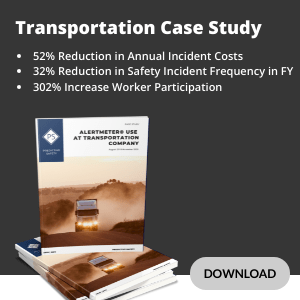Since its establishment in 1967, the Federal Railroad Administration (FRA) has been the principal governing body of all railroads within the USA, ensuring the enforcement of policies and regulations in the railway sector. The majority of the FRA is focused on safety mechanisms and protocols like worker safety, enforcing safety regulations, train speeds, train horn use and track conditions. Railroads have around 10 governing bodies other than the FRA to keep a lookout for, some including DOT (Department of Transportation) and OSHA (Occupational Safety and Health Administration. It's not just getting to compliance; it's about ensuring the well-being of our teams, protecting valuable assets, and ensuring the longevity of our rail enterprise.
Today, let's explore the complexities of railroad safety, Federal Railroad Administration (FRA) regulations and addressing the often underestimated factor of fatigue, and embracing proactive measures.
Rail Safety Statistics: Decoding the Narrativ
Regarding Railway Safety the Federal Railroad Administration's reports there were approximately 3,427 employee on duty accidents/incidents reported across the U.S. rail network in 2022. These incidents encompassed a range of issues, from derailments to collisions and yard accidents. Out of these accidents 24% of them are human error. The financial impact of rail incidents in 2022 exceeded $350 million, covering damages to infrastructure, equipment, and associated response and recovery costs. Beyond financial implications, the human toll was stark, with 3,250 injuries and 918 fatalities reported. These figures emphasize the urgent need to prioritize safety measures and mitigate the far-reaching consequences of rail incidents.
Recognize Your Regulations
For safety managers and employees, understanding FRA titles governing fatigue, pre-duty tasks, and worker safety. Embracing these regulations not only fortifies employee well-being, but can also improve company culture and reduce incident costs and fines.
Below are a few of the FRAs most relevant titles to railway safety and worker fatigue regulations.
Title 49, Part 228
Subpart C - Fatigue Risk Management Programs: Railroad companies must regularly analyze and submit work schedules to the Federal Railroad Administration (FRA) for approval, specifically addressing potential fatigue risks. Compliance involves implementing fatigue mitigation plans, conducting periodic reviews, and consulting with employees to ensure ongoing safety standards.
https://www.ecfr.gov/current/title-49/subtitle-B/chapter-II/part-228
Title 49, Part 228
Hours of Service: Addresses limitations on the number of hours railroad. Employees cannot work more than 12 Hours and after they must have 10 consecutive hours off duty.
Title 49, Part 243
Training, Qualification, and Oversight for Safety-Related Railroad Employees: Defines requirements for the training and qualification of safety-related railroad employees. Employers shall submit a training program to FRA if above 400,000 working hours per year.
Title 49, Part 219
Control of Alcohol and Drug Use: Establishes regulations and required training for controlling alcohol and drug use among railroad employees to ensure safety.
Conformance and Rail Safety
Choosing to invest in safety training isn't just a checkbox; it's a strategic move for the enduring strength of your rail fleet. By ensuring our teams are well-versed in safety protocols, we cultivate a proactive culture that significantly reduces accident risks. Safety isn't just a list of rules; it's a mindset ingrained in our rail community. Understanding and complying with FRA regulations, like Part 228 on Fatigue Risk Management, is crucial.
Investing in innovative tools like AlertMeter® for fatigue and impairment monitoring and mandated safety training further enhances our safety strategy.
Conforming to Title 49: Part 228
Adherence to Title 49 includes a complex and time consuming process of implementing a fatigue mitigation safety plan which asks for specific ways your company is reducing fatigue and increasing workplace safety.
This process can be shortened by implementing the AlertMeter®.
AlertMeter®
The AlertMeter® is a revolutionary fatigue monitoring program that transforms your approach to safety. Accessible via tablet or iPhone and taking less than 60 seconds, it identifies pre-shift fatigue or impairment, offering a proactive solution to mitigate potential risks. The integration of AlertMeter® into your safety plan not only cultivates a safer work environment but also enhances operational efficiency by directly addressing fatigue-related challenges. It's more than just a tool; it's a game-changer that ensures the well-being of our teams and contributes to the long-term success of our rail enterprise."




